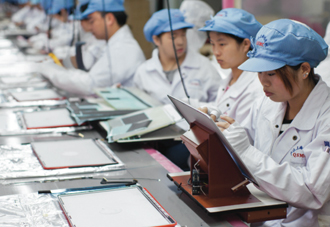A surprising number of American firms are moving some of their manufacturing activity back to the US as costs rise and quality deteriorates in China, according to Shanghai’s First Financial Daily.
Since March Ford, Caterpillar, Wham-O, Sleek Audio and Jarden have begun phasing out contract factories in China’s southern Pearl River Delta. The Delta has become known as the “world’s factory” due to the advantages of cheap, high-quality labor which the world’s top manufacturers had rushed to capitalize on during the past three decades.
In 2009 Sleek Audio found defective circuitry in 10,000 sets of headphones made in Dongguan, a major Pearl River Delta manufacturing city, causing a loss of millions of yuan. The company moved production back to the US and redesigned the headphones, reducing in half the components sourced in China.
The retreat from China is being led by companies making tech, auto parts and household appliances which have higher quality standards.
The move is also fueled by a desire of US firms to improve their image as corporate citizens in their home markets. Earlier this year General Electric — which has become known for offshore outsourcing of virtually all its manufacturing — announced the hiring of 1,000 workers for a new plant to open in Louisville, Kentucky — the first new plant there in 50 years. Despite the relatively low wages advertised for the jobs, GE received over 16,000 applications.
The plant is only a part of GE’s $800-million local investment plan which will continue through 2014.
“We have to put engineers, designers and workers all together to ensure high quality and cost competitiveness,” a GE spokesperson told First Financial Daily.
Whirlpool and Google have also announced the launch of products guaranteed to be “Made in the USA.” Over a third of all US manufacturers are at least considering moving their production back home from China.
So far the shifting of entire manufacturing operations back home has been done mostly by smaller firms for whom the cost of not having to maintain personnel overseas are a significant part of total operating costs, especially when added to the burden of rising labor, energy and transportation costs. But the trend of repatriating manufacturing operations is expected to accelerate over the coming several years.
Withdrawals of offshore manufacturing is also being seen from other parts of China that have even lower labor costs than the Pearl River Delta, according to Guangzhou’s Yangcheng Evening News.
But the trend isn’t likely to mean the departure of US manufacturers from China altogether. China is far too big and important a market to abandon, and most products sold in China are likely to be made there as well. As a Caterpillar executive puts it, “All we produce in China is sold there.”


